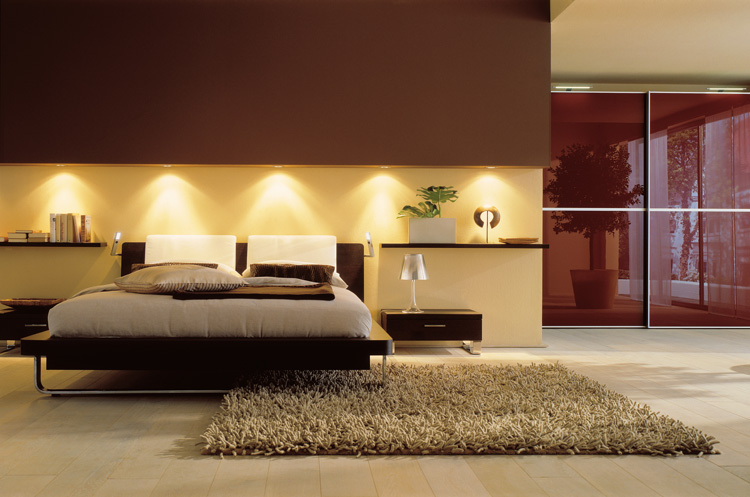Bedroom lighting is an issue in many American homes that is best approached from both a logical and an artistic viewpoint. The use of lighting in a bedroom can be split into three broad objectives. These are to provide light, to enhance the room decor and to be convenient to use. We shall approach each of these both logically and artistically.
Bedroom Lighting: Let There be Light
The fundamental purpose of bedroom lighting is to provide light. Some lighting is used only for its artistic properties, but not in the bedroom. People need light to dress and undress by, for applying cosmetics, to read with and fundamentally just to not be in the dark. So the lighting in a bedroom must be practical. Having established that, it can then be used for its decorative properties.
There are several different types of bedroom lighting available, each intended for a different purpose. Among these are:
Ceiling lights: for general space lighting. The most common types are used in the form of a single lamp with a lampshade, or group of lamps contained in a ceiling lighting unit. A chandelier is an extreme example of the latter, but the fundamental purpose is to light the entire room. In some homes that is the only available lighting in the bedroom.
Table lamps: these often come in pairs, one on each night stand for a double bed. Their primary function is to provide light for reading by, although again, in a few bedrooms, this is only source of lighting.
Spotlights: spotlights are used for directed lighting; to a dresser for example. They are not a means of general space lighting and are rarely used for reading.
Mirror lights: these are often attached to a mirror - the top or the sides - and provide light for applying cosmetics and other such uses.





There are other forms of bedroom lighting to be found, such as wall lamps which again are a form of space lighting. However, those above are by far the most common forms of lighting in a bedroom.
Using Lighting in a Bedroom as Decorative Accents
Having achieved its primary function, each of the above can also be used decoratively. The shades are available in an almost unlimited range of shapes, sizes, designs and colors. In any bedroom, the lamps will almost certainly conform to a certain decorative theme, even if that is just a color scheme.
In a few cases the lamps themselves will be colored, ranging from pinks and reds to amber and blues. Frequently such lamps will be used as an accent in a particular area of the bedroom, rather than as the main means of providing light. They will either match or contrast with the overall bedroom decor, or be used as a colored decorative accent.
The Convenience of a Bedroom Lighting System
One problem with a single light in a bedroom is its inconvenience. Unless fitted with two switches, the room will be in darkness, either before they are turned on or after they have been switched off. Many people use lamps on their nightstands or on the wall above their headboard. They can then still have light when the main light is extinguished.
Another solution to this is an infrared-operated light switch. This is operated by a remote control, and can be used once you are in bed to switch off the lights. This is the most convenient way to control your bedroom lighting.
Summary
When choosing lighting in a bedroom, you should take each of the above factors into consideration. You may not consciously do so, but you will likely have each of the main three factors in mind. Most people will make sure they have adequate lighting in their bedroom and will either match that to their décor or choose something different as a contrast.
They will also make sure that their bedroom lighting can be extinguished from their bed. In saying that, it is amazing how many people still have to walk to the door to switch of the light, and then stumble back to their bed in the dark. Don't let that be you. There is no need to rewire - simply replace your light switch with a remotely activated one.
0 Response to "Bedroom Lighting"
Post a Comment